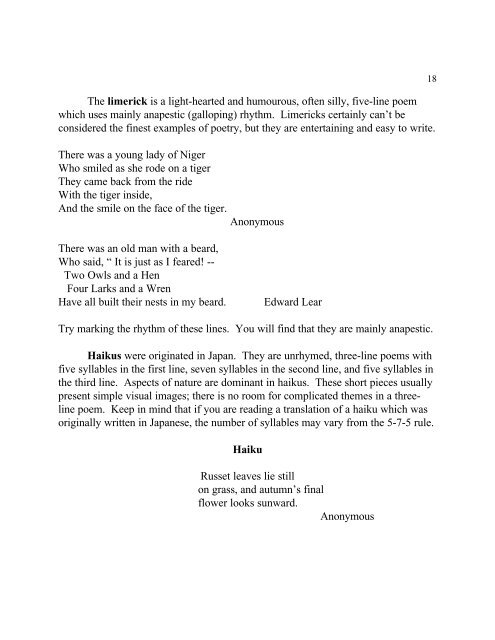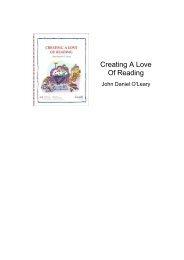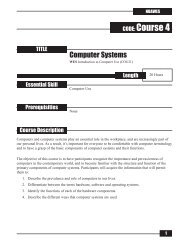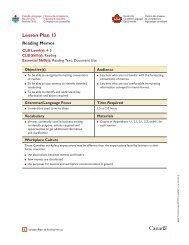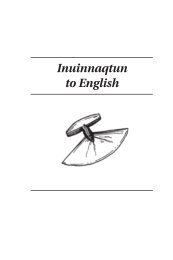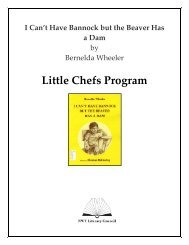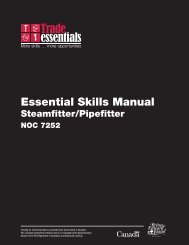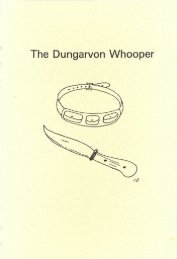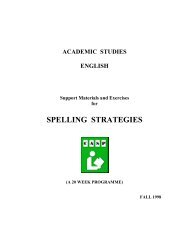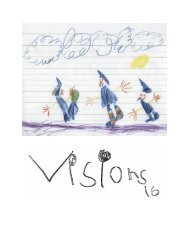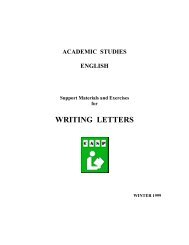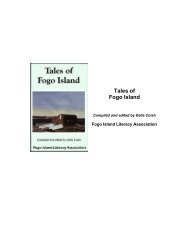PART A : POETRY - National Adult Literacy Database
PART A : POETRY - National Adult Literacy Database
PART A : POETRY - National Adult Literacy Database
You also want an ePaper? Increase the reach of your titles
YUMPU automatically turns print PDFs into web optimized ePapers that Google loves.
The limerick is a light-hearted and humourous, often silly, five-line poem<br />
which uses mainly anapestic (galloping) rhythm. Limericks certainly can’t be<br />
considered the finest examples of poetry, but they are entertaining and easy to write.<br />
There was a young lady of Niger<br />
Who smiled as she rode on a tiger<br />
They came back from the ride<br />
With the tiger inside,<br />
And the smile on the face of the tiger.<br />
Anonymous<br />
18<br />
There was an old man with a beard,<br />
Who said, “ It is just as I feared! --<br />
Two Owls and a Hen<br />
Four Larks and a Wren<br />
Have all built their nests in my beard.<br />
Edward Lear<br />
Try marking the rhythm of these lines. You will find that they are mainly anapestic.<br />
Haikus were originated in Japan. They are unrhymed, three-line poems with<br />
five syllables in the first line, seven syllables in the second line, and five syllables in<br />
the third line. Aspects of nature are dominant in haikus. These short pieces usually<br />
present simple visual images; there is no room for complicated themes in a threeline<br />
poem. Keep in mind that if you are reading a translation of a haiku which was<br />
originally written in Japanese, the number of syllables may vary from the 5-7-5 rule.<br />
Haiku<br />
Russet leaves lie still<br />
on grass, and autumn’s final<br />
flower looks sunward.<br />
Anonymous


